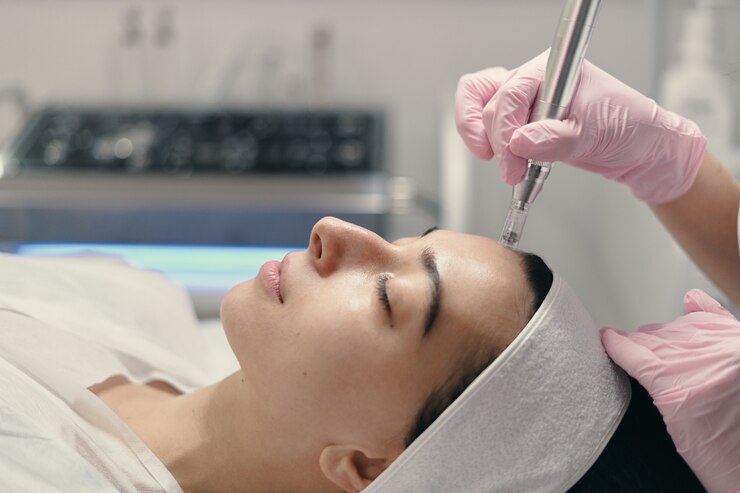Microneedling has become increasingly popular as a skincare treatment that effectively stimulates collagen production and enhances skin texture. However, like any cosmetic procedure, ensuring safety is of utmost importance to achieve desired results without any negative effects. When considering microneedling Birmingham, consulting with a qualified professional is key for a safe and effective experience.
Before we delve into safety precautions, it is crucial to understand what microneedling entails. Microneedling, also known as collagen induction therapy, involves using a device equipped with fine needles that create tiny punctures in the skin. These micro-injuries trigger the natural healing process of the skin, promoting collagen and elastin production. Consequently, microneedling can improve the appearance of fine lines, wrinkles, scars, and overall skin texture.
Microneedling Safety: 6 Crucial Precautions for Radiant Skin-
1. Consultation with a Professional:
One of the initial safety measures is to consult with a qualified skincare professional or dermatologist before undergoing microneedling. A comprehensive assessment of your skin type, concerns, and medical history will help determine whether microneedling is suitable for you. Professionals can also advise on the most appropriate needle length and intensity based on your specific needs.
2. Use of Professional Microneedling Devices:
To ensure safety during microneedling sessions, it is essential to use professional-grade devices. Home-use microneedling tools may lack precision and could lead to uneven results or an increased risk of injury. Opting for treatments performed by licensed professionals who have access to high-quality devices ensures a controlled and safe procedure.
3. Sterilisation and Hygiene:
Maintaining a sterile environment is critical during microneedling to prevent infections and complications. Professionals must adhere to strict hygiene protocols which include cleaning and disinfecting the microneedling device before each use. Patients should also ensure that the treatment area on their skin is clean and free from makeup or other substances that may lead to contamination.
4. Topical Anesthesia Application:
To minimise discomfort during microneedling, professionals often apply a topical anaesthetic cream or gel to numb the treatment area. However, it is important to discuss any potential allergic reactions or sensitivities with your skincare professional beforehand. Additionally, ensuring the correct application of the anaesthetic in the appropriate amount and allowing sufficient time for it to take effect is crucial for a comfortable and safe experience.
5. Post-Treatment Care:
Microneedling safety extends beyond the treatment itself to post-care routines. After the procedure, it is common to experience redness and mild swelling. Professionals typically recommend avoiding sun exposure, strenuous exercise, and using harsh skincare products for a specified period. Adhering to these post-treatment guidelines is vital in preventing complications and promoting optimal healing. When seeking relaxation, consider indulging in a soothing Birmingham massage for a holistic approach to well-being.
6. Sun Protection:
Sun protection plays a fundamental role in microneedling safety. After the procedure, the skin becomes more vulnerable to sun damage; therefore, using a broad-spectrum sunscreen with a high SPF is crucial. Shielding your skin from the sun helps prevent hyperpigmentation and supports the healing process.
While microneedling offers impressive benefits for skin rejuvenation, prioritising safety precautions is essential in achieving desired results without compromising skin health. By following these precautions, you can enjoy the transformative effects of microneedling while safeguarding your skin from potential risks.





Comments